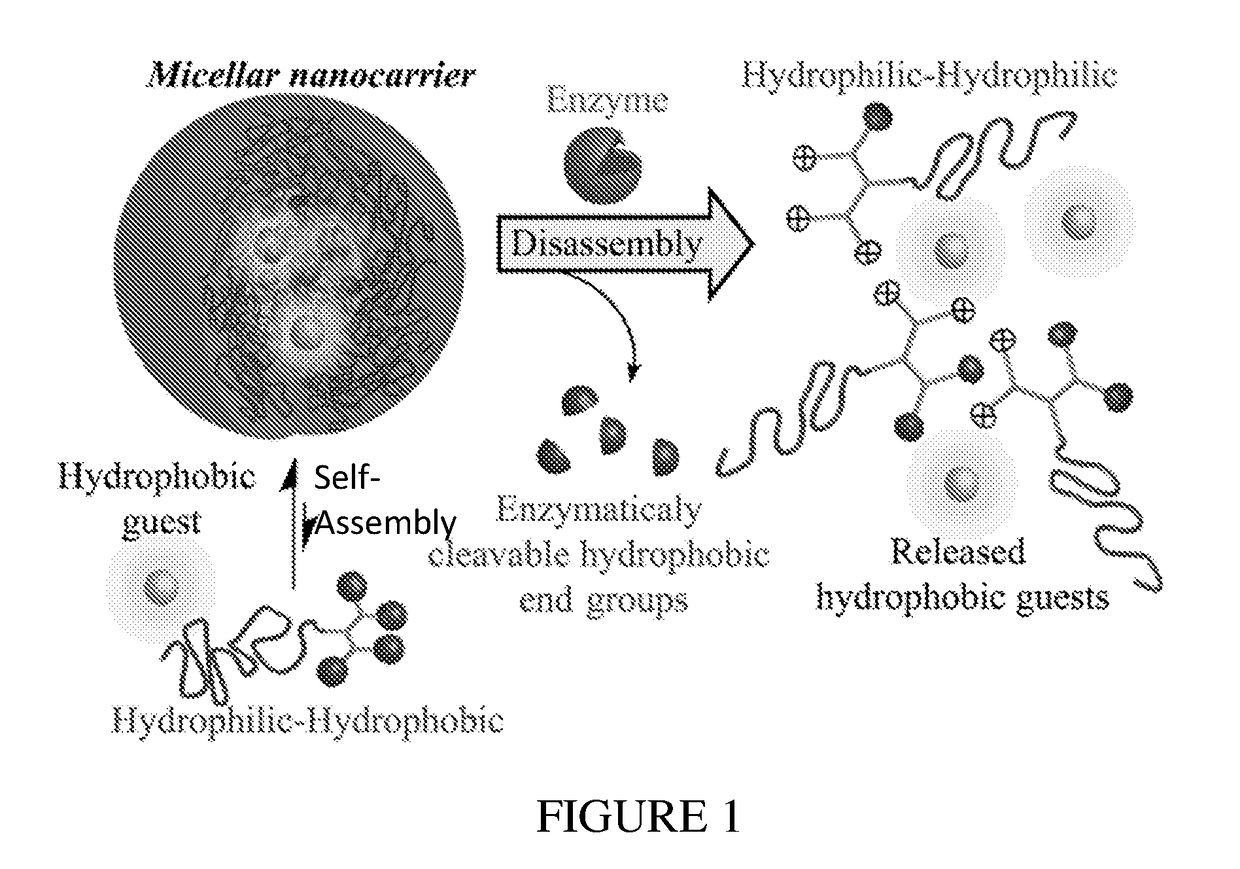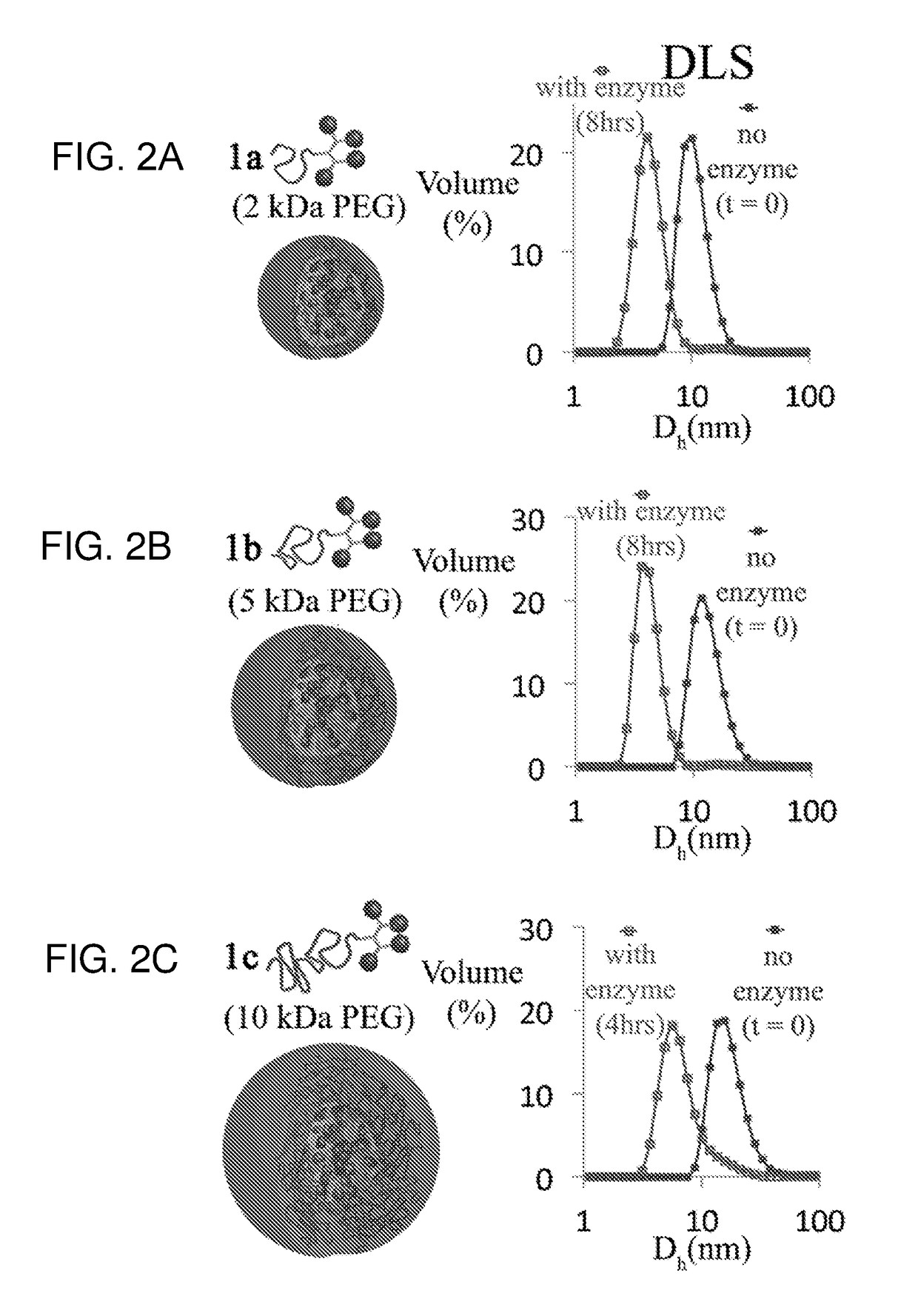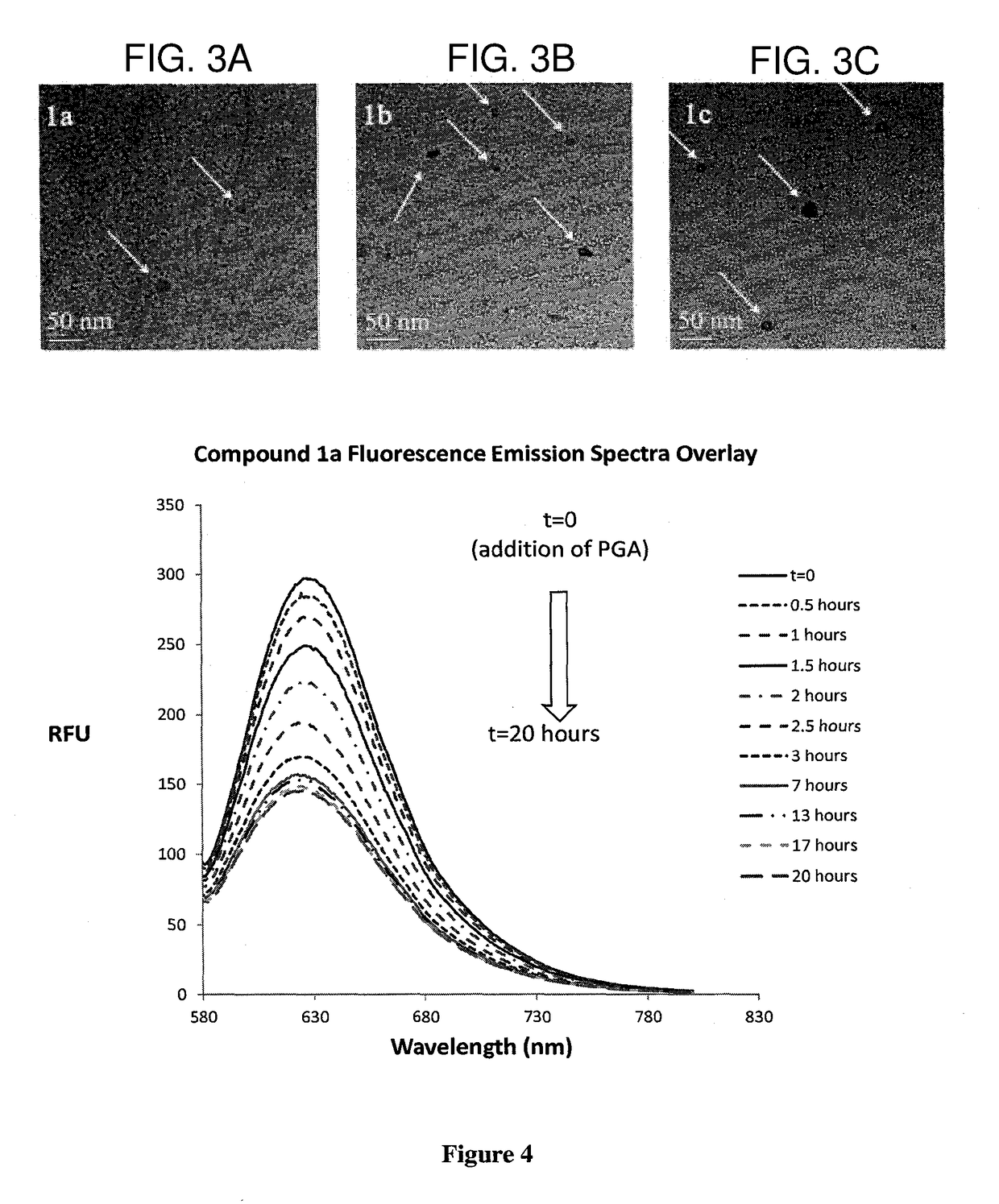Micelar delivery system based on enzyme-responsive amphiphilic peg-dendron hybrid
a technology of amphiphilic and amphiphilic, which is applied in the direction of pharmaceutical delivery mechanism, emulsion delivery, pharmaceutical non-active ingredients, etc., can solve the problems of limited reports of enzyme-responsive synthetic micellar nanostructure, and achieve the effects of more hydrophilic, less toxicity, and more hydrophili
- Summary
- Abstract
- Description
- Claims
- Application Information
AI Technical Summary
Benefits of technology
Problems solved by technology
Method used
Image
Examples
example 1
Materials and Methods
[0155]Materials: Poly (Ethylene Glycol) methyl ether (2 kDa, 5 kDa and 10 kDa), 2-30 (Boc-amino)-ethanethiol (97%), 2,2-dimethoxy-2-phenylacetophenone (DMPA, 99%), Penicillin G Amidase from Escherichia coli (PGA), Esterase from porcine liver (PLE), Allyl bromide (99%), 4-Nitrophenol (99.5%), N,N′-dicyclohexylcarbodiimide (DCC, 99%), Sephadex® LH20 and dry DMF were purchased from Sigma-Aldrich. Cystamine hydrochloride (98%), potassium hydroxide and DIPEA were purchased from Merck. Trifluoroacetic acid (TFA) was purchased from Alfa Aesar and phenyl acetic acid was purchased from Fluka. Silica Gel 60 Å, 0.040-0.063 mm, sodium hydroxide and all solvents were purchased from Bio-Lab and were used as received. All solvents are HPLC grade. Deuterated solvents for NMR were purchased from Cambridge Isotope Laboratories, Inc.
[0156]Instrumentation: HPLC: All measurements were recorded on a Waters Alliance e2695 separations module equipped with a Waters 2998 photodiode array...
example 2
[0167]Synthesis Protocol of the Amphiphilic PEG-Dendron Hybrids (1a-1c)
[0168]In the above scheme, MeO-PEG-NH2 (compounds 2a-2c) is represented by the structure shown in Scheme 2.
[0169]The amphiphilic hybrids (1a-c) of the invention may be prepared by the process described in general Scheme 1 hereinabove. Briefly, the hybrid block copolymers were synthesized utilizing mono-methyl ether PEG-amine, 2a-c, as starting materials. Conjugation with an active ester of 3,5-bis(prop-2-yn-1-yloxy)benzoic acid, 3, yielded PEG-di-yne, 4a-c. The latter were further modified by thiol-yne reaction with N-Boc cysteamine, 5, to give tetra-functionalized PEG-dendrons, 6a-c, followed by deprotection of the Boc to yield PEG-tetra-amine, 7a-c. In the last step of the synthesis, 4-nitrophenyl ester of phenyl acetic acid, 8, was used to introduce the enzyme cleavable hydrophobic surface-groups. PEG-dendron hybrids, 1a-c, were obtained as off-white solids with overall yields of 76%, 86% and 93%, respectivel...
example 3
Synthesis Protocol of the Amphiphilic PEG-Dendron Hybrids (11b and 15b)
[0193]
[0194]The compounds (11b and 15b) of the invention may be prepared by the process described in general Schemes 3a and 3b hereinabove. Briefly, the hybrid block copolymers were synthesized utilizing mono-methyl ether PEG-amine, 2b, prepared as described in Example 2. Conjugation of compound 2b with an active ester of 3,5-bis(prop-2-yn-1-yloxy)benzoic acid yielded PEG-di-yne, 4b. The latter was further modified by thiol-yne reaction with 2-mercaptoethanol, 12, to give tetra-functionalized PEG-dendron, 10b. In the last step of the synthesis, phenyl acetic acid, 13, or coumarin, 14, were used to introduce the enzyme cleavable hydrophobic surface-groups and to obtain the PEG-dendron hybrids, 11b and 15b respectively.
[0195]Similar reactions are performed with 2 kDa PEG and 10 kDa PEG to yield the corresponding PEG-dendron hybrids 11a, 11c (hybrids with phenyl acetic acid), and 15a and 15c (hybrids with coumarin),...
PUM
| Property | Measurement | Unit |
|---|---|---|
| particle size | aaaaa | aaaaa |
| particle size | aaaaa | aaaaa |
| particle size | aaaaa | aaaaa |
Abstract
Description
Claims
Application Information
 Login to View More
Login to View More - R&D
- Intellectual Property
- Life Sciences
- Materials
- Tech Scout
- Unparalleled Data Quality
- Higher Quality Content
- 60% Fewer Hallucinations
Browse by: Latest US Patents, China's latest patents, Technical Efficacy Thesaurus, Application Domain, Technology Topic, Popular Technical Reports.
© 2025 PatSnap. All rights reserved.Legal|Privacy policy|Modern Slavery Act Transparency Statement|Sitemap|About US| Contact US: help@patsnap.com



